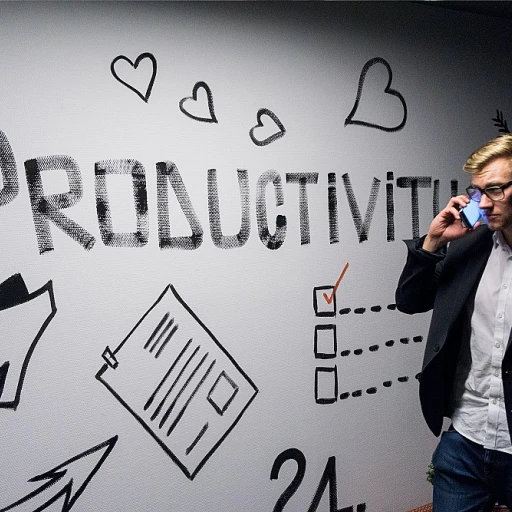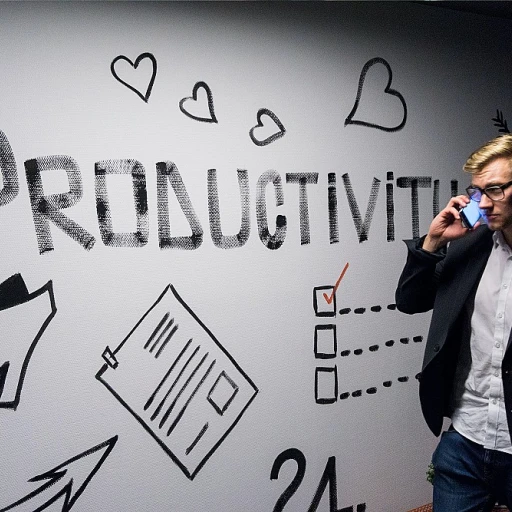
Understanding Skill Acquisition Programming
Breaking Down Skill Acquisition Programming
Understanding the intricacies of skill acquisition programming is essential for tailoring effective professional mentoring strategies. Skill acquisition, especially in fields like ABA therapy, involves developing specific skills through structured methods. This approach is not only crucial for children with autism but also applies across various professional settings where behavior and skill enhancement are the goals. In the realm of Applied Behavior Analysis (ABA), skill acquisition encompasses a series of steps. These manageable steps are designed to ensure that learning and development occur systematically. The process is often supported by "acquisition plans," which act as roadmaps in teaching. These plans outline the necessary tasks broken into smaller, attainable goals, ensuring that each step in the sequence is successfully mastered before moving on to the next.Building Blocks of Skill Acquisition
- Task Analysis: This involves breaking down complex tasks into smaller, teachable components. By simplifying tasks, it becomes easier to teach and assess them, catering especially to areas like daily living skills and motor learning.
- Data Collection: Collecting data is pivotal in understanding the learner's progress, making real-time adjustments possible. Through systematic data collection, behavior analysts can fine-tune strategies, making acquisition programs more effective.
- ABA Techniques: Employing ABA techniques in skill teaching helps to reinforce positive behavior. These techniques offer structured social and communication skill development that can significantly impact learners, particularly in group settings.
- Practical Application: Balancing theory with practice is a recurring theme in design and implementation. With task analysis, ABA strategies, and data collection, professionals can ensure that learning transfers effectively into real-world scenarios.
Importance of Customization
Every learner is unique, requiring mentoring strategies to be customized. Tailoring acquisition programs to meet specific needs promotes better engagement and success rates. For more insights on how staffing training can enhance skills development, take a look at this guide on effective staffing training. Taking the time to thoroughly understand skill acquisition programs enhances the capacity to create impactful mentoring experiences. As professionals delve into designing learning sequences and exploring feedback roles, the focus remains on facilitating a growth-oriented learning environment.Designing Effective Learning Sequences
Crafting an Engaging Learning Journey
Designing effective learning sequences involves crafting an engaging journey tailored to the unique needs of the learner. This process often requires breaking down skills into smaller, manageable steps, particularly in fields such as ABA therapy where skill acquisition for children with autism is a focus. Utilizing task analysis, behavior analysts can create acquisition programs that effectively teach essential daily living and social skills. An effective strategy is to implement a variety of teaching techniques and strategies that cater to the learner’s specific needs. This can include using visual aids, hands-on activities, or group learning sessions to reinforce the acquisition of pivotal behaviors. The sequence should be structured yet flexible enough to accommodate a learner's pace, ensuring that each task builds upon previously acquired skills. Moreover, integrating data collection and analysis into this process allows for informed adjustments to the sequence. This evidence-based approach enables educators to identify what works best through the analysis of behavioral data and make necessary tweaks in real-time. The goal is to design sequences that maintain the interest of the learner while ensuring a balance between challenging new tasks and reinforcing existing skills through practice. This approach not only aids in motor learning but also enhances communication and social interactions. For those interested in the broader spectrum of professional mentoring beyond ABA, personalized professional training can offer insights into crafting customized learning journeys that cater to individual career goals.The Role of Feedback in Skill Acquisition
Importance of Feedback in Skill Development
In the realm of professional mentoring, feedback serves as a cornerstone for effective skill acquisition. It's a vital element, particularly in applied behavior analysis (ABA) and other teaching strategies, providing learners with the necessary information to improve their skills and behaviors in manageable steps. Feedback can be divided into different types: immediate, positive, corrective, and specific. Each plays a pivotal role in fostering the learner's skill acquisition journey. For example, immediate feedback helps correct errors on the spot, while positive feedback serves to reinforce desired behaviors, both crucial in programs such as ABA therapy. Effective feedback requires a structured approach, particularly in the context of teaching children with autism. Behavior analysts often use data collection to inform their feedback, ensuring it aligns with the learner's acquisition program. The task analysis conducted, along with continuous communication, guides learners through daily living and motor learning skills, helping them achieve specific acquisition goals. Furthermore, feedback isn't restricted to correcting wrongs; it bolsters motivation and confidence. In group settings or individual sessions, providing social and communication skills feedback can greatly enhance the dynamics of learning environments. This is especially significant when dealing with tasks smaller in their essence yet pivotal in broader behavior change programs. The role of feedback also extends into evaluating the success of applied behavior analysis techniques. With strategic data collection and behavior analysis, feedback allows for tailoring learning sequences to the progress observed. This responsive adaptation keeps training relevant and effective, ensuring the learners are grasping and applying the skills taught. Balancing actionable insights with empathetic delivery of feedback can make a substantial difference in the learner's journey. By integrating such feedback approaches, mentors significantly enhance the learner's experience, fostering not just skill acquisition but also personal growth and self-assurance. For further insight into strategies that support skill acquisition, consider exploring coaching in executive environments, where similar principles of personalized feedback are applied.Balancing Theory and Practice
Harmonizing Theory with Practical Application
In the realm of professional mentoring, achieving a seamless balance between theory and practice plays a pivotal role in effective skill acquisition. As teaching professionals, behavior analysts often employ task analysis and break down complex tasks into smaller, manageable steps, which directly translates into more effective learning sequences. To facilitate skill acquisition, especially when working with specific groups such as children with autism, it is crucial to implement practices where theoretical knowledge is intertwined with real-world application. Social skills training, for instance, can be enhanced by creating a supportive environment where communication and interaction are practiced in diverse settings. Furthermore, in applied behavior analysis (ABA therapy), combining conceptual learning with motor learning tasks can enhance the learner's engagement and retention of skills. By reinforcing daily living skills through direct practice, learners acquire pivotal behaviors essential for their development. Effective design of acquisition programs involves practical exercises that mirror the theoretical principles discussed during training. This could involve real-time behavior analysis and data collection to understand and modify behaviors according to the desired outcomes. When teaching strategies incorporate both theory and practice, they foster deeper understanding and mastery. Implementing a balanced approach in skill acquisition ensures that learners can not only grasp conceptual knowledge but also apply these skills effectively in their day-to-day tasks. This comprehensive method of training nurtures well-rounded individuals ready to excel in any setting.Overcoming Challenges in Skill Acquisition
Crafting Strategic Solutions for Common Hindrances
Acquiring new skills is fraught with obstacles that can hinder progress. Whether you're devising an acquisition program for professional mentoring or tailoring analysis aba tailored for children autism, understanding and overcoming these challenges is critical. Let's delve into different strategies that can help manage the hurdles of skill acquisition.
- Break Tasks into Manageable Steps: Skill acquisition often confronts learners with complex tasks that could be daunting. Applying a principle from aba therapy, breaking down tasks into smaller, more manageable steps can greatly aid understanding. This task analysis technique is especially effective in teaching skills related to daily living and motor learning.
- Data Collection and Analysis: An invaluable component within skill acquisition programming is the systematic collection and analysis of data. This allows mentors and behavior analysts to gauge which teaching strategies are effective or require adjustments. By identifying trends through data collection, you can pinpoint pivotal behaviors that influence the learner's progress.
- Incorporate Varied Teaching Methods: Balancing different teaching methods ensures a comprehensive acquisition experience. Methods should encompass theory, practice, and even group social skills training. An applied behavior approach to learning can identify practices that resonate best with the learner, whether they are children or adults.
- Maintain Open Communication: Clear and constant communication is fundamental in addressing any uncertainties or misconceptions the learner may have. Regular feedback and open dialogue foster an environment where questions are encouraged, facilitating better understanding and skill refinement.
- Provide Continuous Support: During challenging phases of an acquisition plan, having robust support systems can be the difference between progression and stagnation. This includes not just the mentor’s input but also peer support through group learning sessions.
Confronting and navigating the challenges in skill acquisition isn't a solitary task. Through persistent effort, strategic adjustments, and leveraging aba techniques, behavior analysts and mentors can guide learners toward their personal and professional goals effectively.












